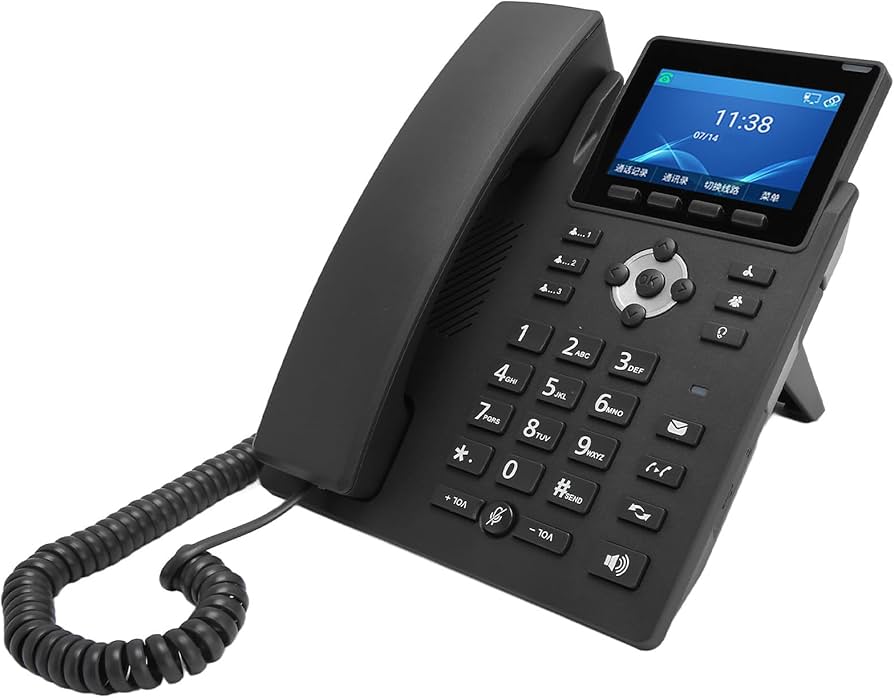
Intercom System
UGX 2,000,000
Why Choose This Product?
- ✅ 100% Genuine and Licensed Software
- ✅ Instant WhatsApp Support Available
- ✅ Free Installation Assistance
- ✅ Secure Digital Delivery
- ✅ Ongoing Technical Support
How to Purchase:
🚀 Fast Delivery Across Uganda
We deliver to all major Ugandan cities including:
Product Details
1. Introduction
In response to the need for efficient and reliable communication within our organization, we propose the implementation of a comprehensive Telephony and Intercom System (TIS). This system is designed to enhance internal and external voice communications, ensuring rapid connectivity across departments and improving response times in both routine and emergency situations.
2. Objective
The primary objective of this proposal is to deploy a robust digital platform that simplifies telephony operations, reduces communication bottlenecks, and enhances overall operational efficiency. The system aims to improve connectivity, support multi-channel communications, and ensure a secure and scalable network for all users.
3. Solution Overview
The proposed TIS will serve as a centralized platform for managing all voice communications and intercom functionalities. Accessible via intuitive web and mobile interfaces, the system integrates advanced call routing, auto-attendant features, and instant push-to-talk intercom services. This unified platform will streamline communication processes, enabling both real-time and asynchronous interactions across various organizational units.
4. Key Features
4.1 Advanced Call Routing and Auto-Attendant
- Intelligent call distribution ensuring quick and accurate connection.
- Interactive Voice Response (IVR) to direct callers based on predefined criteria.
4.2 Integrated Intercom Functionality
- Push-to-talk capability for instant internal communication.
- Dedicated channels for group and individual intercom use, catering to different operational needs.
4.3 Unified Communication Platform
- Seamless integration of voice, video, and messaging services.
- Compatibility with desk phones, mobile devices, and computer endpoints for versatile communication options.
4.4 Comprehensive Reporting and Analytics
- Real-time dashboards to monitor call traffic, system performance, and user activity.
- Detailed analytics on call usage, response times, and service reliability to support informed decision-making.
4.5 Scalability and Multi-Tenant Management
- Flexible configuration to support multiple departments, locations, or branches.
- Customizable user profiles and access controls ensuring secure and efficient communication management.
4.6 Security and Compliance
- End-to-end encryption and robust authentication protocols to protect voice and data communications.
- Compliance with industry standards and regulatory requirements to safeguard organizational information.
5. Technical Architecture
- Backend: A robust VoIP server platform (e.g., Asterisk or FreePBX) to manage call processing, routing, and intercom functionalities.
- Database: High-performance systems such as PostgreSQL for secure storage of call logs, user data, and analytics.
- Frontend: Modern web technologies (HTML5, CSS3, React) delivering a responsive and user-friendly interface across desktops and mobile devices.
- Network Infrastructure: Seamless integration with existing IT networks, supported by dedicated VoIP hardware and high-bandwidth connectivity to ensure quality and reliability.
- Security Measures: Implementation of advanced encryption protocols, firewall protections, and continuous monitoring to safeguard communications and prevent unauthorized access.
6. Conclusion
Implementing the Telephony and Intercom System will transform our organization’s communication infrastructure by streamlining voice interactions, enhancing operational efficiency, and ensuring secure, real-time connectivity. This solution is pivotal for improving internal collaboration and responsiveness, ultimately supporting our mission to maintain a highly productive and agile workplace.
About Intercom System in Uganda
Intercom System is available for purchase in Uganda through our secure online platform. As Uganda's trusted software retailer, we ensure you get genuine, licensed software with full support.
What's Included:
- Original software license
- Installation guide and support
- Product activation assistance
- 30-day technical support
Customer Support
- WhatsApp: +256 705 860 416
- Email: support@vuplon.com
- Hours: Mon-Sat, 8 AM - 6 PM
- Response: Within 30 minutes
Payment Methods
Mobile Money, Bank Transfer, Cash